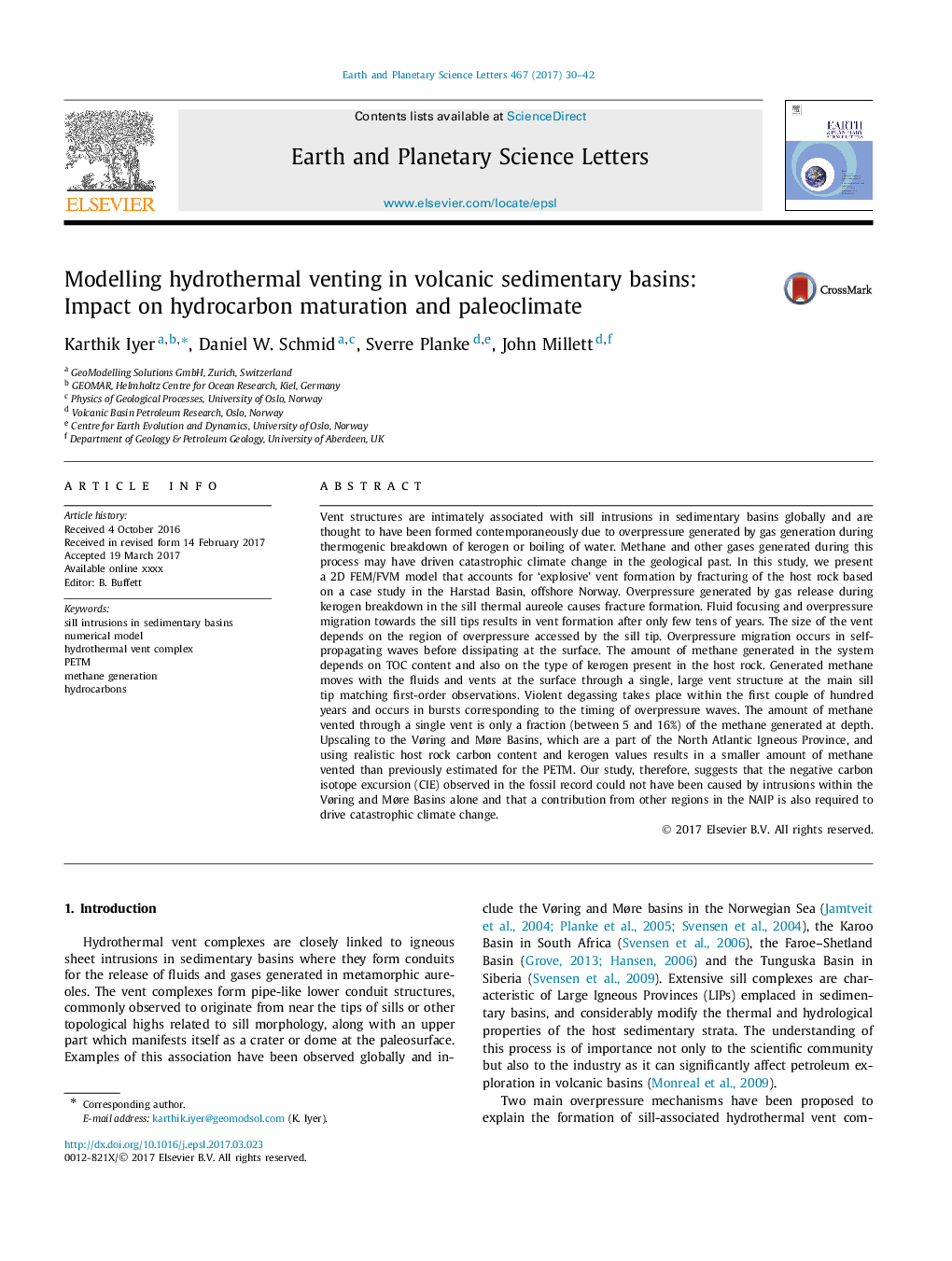| کد مقاله | کد نشریه | سال انتشار | مقاله انگلیسی | نسخه تمام متن |
|---|---|---|---|---|
| 5779936 | 1634689 | 2017 | 13 صفحه PDF | دانلود رایگان |
عنوان انگلیسی مقاله ISI
Modelling hydrothermal venting in volcanic sedimentary basins: Impact on hydrocarbon maturation and paleoclimate
ترجمه فارسی عنوان
مدلسازی جریان هیدروترمال در حوضه های رسوبی آتشفشانی: تاثیر بر بلوغ هیدروکربن و پائول کللیمات
دانلود مقاله + سفارش ترجمه
دانلود مقاله ISI انگلیسی
رایگان برای ایرانیان
موضوعات مرتبط
مهندسی و علوم پایه
علوم زمین و سیارات
علوم زمین و سیاره ای (عمومی)
چکیده انگلیسی
Vent structures are intimately associated with sill intrusions in sedimentary basins globally and are thought to have been formed contemporaneously due to overpressure generated by gas generation during thermogenic breakdown of kerogen or boiling of water. Methane and other gases generated during this process may have driven catastrophic climate change in the geological past. In this study, we present a 2D FEM/FVM model that accounts for 'explosive' vent formation by fracturing of the host rock based on a case study in the Harstad Basin, offshore Norway. Overpressure generated by gas release during kerogen breakdown in the sill thermal aureole causes fracture formation. Fluid focusing and overpressure migration towards the sill tips results in vent formation after only few tens of years. The size of the vent depends on the region of overpressure accessed by the sill tip. Overpressure migration occurs in self-propagating waves before dissipating at the surface. The amount of methane generated in the system depends on TOC content and also on the type of kerogen present in the host rock. Generated methane moves with the fluids and vents at the surface through a single, large vent structure at the main sill tip matching first-order observations. Violent degassing takes place within the first couple of hundred years and occurs in bursts corresponding to the timing of overpressure waves. The amount of methane vented through a single vent is only a fraction (between 5 and 16%) of the methane generated at depth. Upscaling to the Vøring and Møre Basins, which are a part of the North Atlantic Igneous Province, and using realistic host rock carbon content and kerogen values results in a smaller amount of methane vented than previously estimated for the PETM. Our study, therefore, suggests that the negative carbon isotope excursion (CIE) observed in the fossil record could not have been caused by intrusions within the Vøring and Møre Basins alone and that a contribution from other regions in the NAIP is also required to drive catastrophic climate change.
ناشر
Database: Elsevier - ScienceDirect (ساینس دایرکت)
Journal: Earth and Planetary Science Letters - Volume 467, 1 June 2017, Pages 30-42
Journal: Earth and Planetary Science Letters - Volume 467, 1 June 2017, Pages 30-42
نویسندگان
Karthik Iyer, Daniel W. Schmid, Sverre Planke, John Millett,
